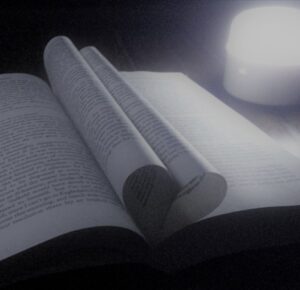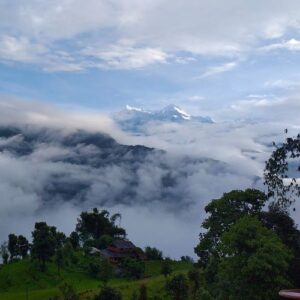We set foot in the valley of Kashmir in 1988. Just barely before the Insurgency broke out in 1989. A young tween then, I was oblivious to what we were to encounter. We had somehow captured a slice of ‘Heaven on Earth’ before the tragic events of Kashmir would come into play.
The shikhara was traversing a pristine mirrored lake reflecting white snow-filled mountains and blazing blue skies. Moored by an alluring blue-green-eyed Kashmiri boatman, the stillness of the lake accentuated the presence of the lofty peaks, the soft ripples of the oars and the lingering wisp of ember from the boatman’s kangri, tucked snugly between his legs in his thick pherans. Often enough, intricately carved pinewood houseboats puffing out grey clouds of smoke from its chimney could be spotted dotting around the shorelines at an elevation of 1600m.
Unlike any other place on Earth, the beauty of the valley was madly overwhelming.
That very moment of being enveloped in the embrace of the Pir Panjal and Karakoram range had vividly left an indelible impression on my subconscious. I felt and knew, that the Himalayas had a place in my heart.
But winters in the Himalayas can be bitterly cold. To stay warm, Kashmiris carry their portable kangris tucked under their long cloaks from the freezing temperatures. A kangri is an ember-filled earthen pot. It is woven around with wicker and a handle to carry for ease. Added measures to keeping warm would be to sip piping hot chai regularly. Kahwa is a brew of green tea leaves fused with a tinge of saffron, crushed cardamom, cinnamon and sugar, prepared in a samovar kettle. For a posh version, it can be garnished with rose petals and almonds to give an added subtle flavour to the fragrant tea.
Another version of chai is the unique pink noon – a pretty eye-catcher of traditional Kashmir culture. Salt, locally known as noon is added to this creamy beverage instead of sugar, combined with a pinch of baking soda, cardamom and milk. Salt acts as an electrolyte to prevent dehydration at high altitudes whilst the pink hue occurs because of the reaction between chlorophyll and baking soda. And one might ask how delectable pink salty tea may possibly be.
It may tend to elicit mixed opinions and even emotions. Salty with a hint of bitterness, pink chai seems to reflect the political situation in Kashmir. Apparently noon chai helps chase away the blues. One Kashmiri blogger writes: “It’s the closest thing to an antidepressant.” Serving it pretty as it looks with no clues may give unbiased answers.
Eleven years later, a poster of the Himalayas appeared in Stratford-upon-Avon at my workplace. It took the form of a trek to Gaumukh-Tapovan. Another mind-blowing experience it was albeit in a very different culture within the west Indian subcontinent of the Himalayas. Considered one of the oldest and holiest trails in India, it takes one to the Gangotri glacier where the source of the River Ganga is located. Ganga feeds and nourishes an entire civilization from the trickling of Gaumukh, the snout of the glacier. The trek passes through larger than life mountainscapes, shades of brown and grey rugged terrains and scantily clad sadhus. We camped on high expanse of land, savouring the surreal sight of the Bhagirathi peaks glistening in the moonlight.
But a trek wouldn’t be complete without the treat of sighting the occasional tea stall hut. The iconic blue plastic sheet flapping wildly in the winds not too far away got our hearts pounding. Like desperate hungry hounds, we quickened our pace in the hope of finding a drop of sweetness.
After much effort in passing through weather beaten trails, we knew that the little cup of steaming chai had the ability to bring incredible joy. In that state of exhaustion and thirst, observing the chai wallah preparing the chai was akin to watching a Tarkovsky moving camera shot in slow motion.
With keenness of attention, I watched him perform his ritual.
By a small stove in a dark corner of the tent, the chai wallah reaches for a dented pot, a fire-blackened thing made out of cheap metal. He knocks out the remains of the last batch of chai, wipes out the pot with a stained rag and sets it on the stove. He adds several cups of water and two ladles of buffalo milk. As the mixture begins to heat, the chai wallah adds a piece of freshly bruised ginger, a few crushed black peppercorns and generous amounts of Brook Bond 3 Roses CTC tea. CTC tea is a given name of what’s left of the tea after the finest leaves have been sold for export. The acronym stands for Crush-Tear-Curl, a method of processing black tea in which the leaves are passed through a series of cylindrical rollers that crush, tear, and curl the tea into small hard pellets.
Now a critical step.
The chai wallah reaches for a large tin of coarse crystal sugar. He adds a spoonful. And another. And another. And another.
I lost count.
Then he waits. Occasionally, he would shake the pot of chai around the fire and give it a good stir. There’s no hurry. Minutes pass. And finally the chai is ready. With precision, he pours the piping hot tea through a strainer from an impressive height into little glasses creating a bubbly froth at the top.
That little steaming glass of frothy chai was out of this world. It was perfect. And how I had wished the chai in that little glass never ran out. In the coldness of the mountains, the warmness of ginger and spiced black pepper certainly brought depth to the concoction.
Chai at that altitude – certainly can’t beat that.
Back down in the hills of Annapurna Nepal, 20 years later, the boys are picking fresh green tea leaves on the higher terrains of our homestay in Astam during the lockdown. Little A takes it seriously and ensures his bag is filled up before he descends. Once the leaves are harvested, they are left to dry for a couple of days on bamboo mats. The leaves are then rolled between the palms and stacked into little bundles. Leaving them for another couple of days to mature, the tea leaves are ready to be stored and consumed.
Chia is what it’s called in these parts of the Himalayas. The dried tea leaves are simmered with crushed homegrown ginger and copious amounts of coarse white sugar resulting in an almost syrupy consistency.




Being enthusiasts of masala chai, our homemade recipe is tweaked from time to time according to our geographical location and what is locally available. In a warmer tropical climate like Kuala Lumpur, we would use a pestle and mortar to crush the cardamoms, cloves, cinnamon sticks and fresh ginger in water: milk ratio of 65:35. In a colder climate like Astam, we prefer a blend of black peppercorns, cardamom, cloves and fresh ginger in water: milk ratio of 50:50. For a tasty cuppa, it is essential that the spices are simmered sufficiently with the water and milk before the tea leaves are added at the end of the concoction for about 2 minutes.
With all its variations in brewing chai to tickle all tastebuds, I’d say chai is here to stay.



iiLing
13 Jul 2020Sam Shem! So glad to find you here, we miss you too! You must come visit one day when we have our home built so that you can weave your magic and share your journey where we last left.
Samuel S Shem
13 Jul 2020I loved all this so much! Your writing, the pictures and this new incredible journey. Miss you guys so much and so glad I found this! ❤️
EeVonn
7 Apr 2020Crush Tea Cool! Enjoy ur frothy Chai where you are! 🗻☕️